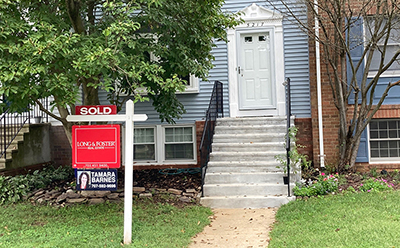
Existing Home Sales Fall to Near 2-Year Low

Existing home sales fell for the third straight month, the National Association of Realtors reported Thursday, to their lowest level since June 2020.
The report said April total existing home sales (https://www.nar.realtor/existing-home-sales) fell by 2.4% from March to a seasonally adjusted annual rate of 5.61. Year-over-year, sales dropped by 5.9% (5.96 million).
Single-family home sales fell to a seasonally adjusted annual rate of 4.99 million in April, down 2.5% from 5.12 million in March and down 4.8% from one year ago. The median existing single-family home price rose to $397,600 in April, up 14.8% from April 2021. Existing condominium and co-op sales fell to a seasonally adjusted annual rate of 620,000 units in April, down 1.6% from March and down 13.9% from one year ago. The median existing condo price rose to $340,000 in April, an annual increase of 13.1%.
Regionally, results were mixed. In the largest region, the South, sales fell by 4.6% in April from June to an annual rate of 2,490,000; from a year ago, sales fell by 5.7%. The median price in the South jumped to $352,100, a 22.2% climb from one year prior. For the eighth consecutive month, the South recorded the highest pace of price appreciation in comparison to the other three regions. Additionally, the South is the only region to report year-over-year double-digit price gains.
Sales in the West fell by 5.8% in April from March, to an annual rate of 1,140,000, and fell by 8.1% from one year ago. The median price in the West rose to $523,000, up 4.3% from April 2021
Sales in the Northeast rose by 1.5% in April, to an annual rate of 670,000, but fell by 10.7% drop from a year ago. The median price in the Northeast rose to $412,100, up 8.1% from one year ago. Sales in the Midwest rose by 3.1% in April to annual rate of 1,310,000, but fell by 1.5% from a year ago. The median price in the Midwest rose to $282,000, an 8.7% increase from one year ago.
“The combination of higher prices and higher mortgage rates continue to negatively impact home sales,” said Joel Kan, Associate Vice President of Economic and Industry Forecasting with the Mortgage Bankers Association. “Although the job market is still extremely strong, emerging signs of economic weakness have also added to the overall uncertainty for potential homebuyers.”
Kan noted steep home-price appreciation was particularly impactful on first-time home buyers, who have seen their share of home sales decrease to 28 percent compared to 31 percent a year ago. “Inventory is a key component of housing market conditions, and the limited availability of homes for sale has been adding to upward pressure on prices, delaying some purchase activity,” he said. “While there was a slight increase in the number of homes for sale to just over 1 million units, this was likely due to the declining sales pace as demand slows. At just over a two-month supply, inventory is still extremely low by historical standards, and the recent slowdown in residential construction activity may prolong this shortage.”
“Home buying activity is cooling down against a backdrop of the ongoing rapid growth in home prices and recent step up in mortgage rates,” said Mark Vitner, Senior Economist with Wells Fargo Economics, Charlotte, N.C. “On top of rising borrowing costs, the return to the office gaining further momentum appears to be cutting into demand for vacation homes according to Redfin. More workers heading back into the office removes some of the urgency to obtain a larger living space for remote activities and also leaves less overall time to search for a home.”
Vitner noted despite some slowdown in demand, homes continue to sell very quickly. Nonethless, he said, “the factors that boosted housing activity to unprecedented levels during the pandemic era appear to be unwinding.”
“Higher home prices and sharply higher mortgage rates have reduced buyer activity,” said NATR Chief Economist Lawrence Yun. “It looks like more declines are imminent in the upcoming months, and we’ll likely return to the pre-pandemic home sales activity after the remarkable surge over the past two years.”
The report said total housing inventory at the end of April rose to 1,030,000 units, up 10.8% from March and down 10.4% from one year ago (1.15 million). Unsold inventory sits at a 2.2-month supply at the current sales pace, up from 1.9 months in March and down from 2.3 months in April 2021.
“Housing supply has started to improve, albeit at an extremely sluggish pace,” Yun said.
The median existing-home price for all housing types in April rose $391,200, up 14.8% from April 2021 ($340,700), as prices increased in each region, marking 122 consecutive months of year-over-year increases, the longest-running streak on record.
The report said properties typically remained on the market for 17 days in April, unchanged from March and a year ago. Eighty-eight percent of homes sold in April were on the market for less than a month.
First-time buyers represented 28% of sales in April, down from 30% in March and from 31% a year ago. All-cash sales accounted for 26% of transactions in April, down from 28% in March and up from the 25% a year ago.
Individual investors or second-home buyers purchased 17% of homes in April, down from 18% in March and unchanged from a year ago. Distressed sales represented less than 1% of sales in April, unchanged from March and down from 2% a year ago.
